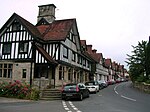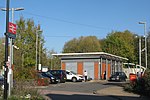Piltdown Man

The Piltdown Man was a paleoanthropological fraud in which bone fragments were presented as the fossilised remains of a previously unknown early human. Although there were doubts about its authenticity virtually from the beginning (in 1912), the remains were still broadly accepted for many years, and the falsity of the hoax was only definitively demonstrated in 1953. An extensive scientific review in 2016 established that amateur archaeologist Charles Dawson was responsible for the fraudulent evidence.In 1912, Charles Dawson claimed that he had discovered the "missing link" between early apes and man. In February 1912, Dawson contacted Arthur Smith Woodward, Keeper of Geology at the Natural History Museum, stating he had found a section of a human-like skull in Pleistocene gravel beds near Piltdown, East Sussex. That summer, Dawson and Smith Woodward purportedly discovered more bones and artifacts at the site, which they connected to the same individual. These finds included a jawbone, more skull fragments, a set of teeth, and primitive tools. Smith Woodward reconstructed the skull fragments and hypothesised that they belonged to a human ancestor from 500,000 years ago. The discovery was announced at a Geological Society meeting and was given the Latin name Eoanthropus dawsoni ("Dawson's dawn-man"). The questionable significance of the assemblage remained the subject of considerable controversy until it was conclusively exposed in 1953 as a forgery. It was found to have consisted of the altered mandible and some teeth of an orangutan deliberately combined with the cranium of a fully developed, though small-brained, modern human. The Piltdown hoax is prominent for two reasons: the attention it generated around the subject of human evolution, and the length of time, 41 years, that elapsed from its alleged initial discovery to its definitive exposure as a composite forgery.
Excerpt from the Wikipedia article Piltdown Man (License: CC BY-SA 3.0, Authors, Images).Piltdown Man
Down Street, Wealden Fletching
Geographical coordinates (GPS) Address Nearby Places Show on map
Geographical coordinates (GPS)
| Latitude | Longitude |
|---|---|
| N 50.987777777778 ° | E 0.062777777777778 ° |
Address
Down Street
Down Street
TN22 3XU Wealden, Fletching
England, United Kingdom
Open on Google Maps







